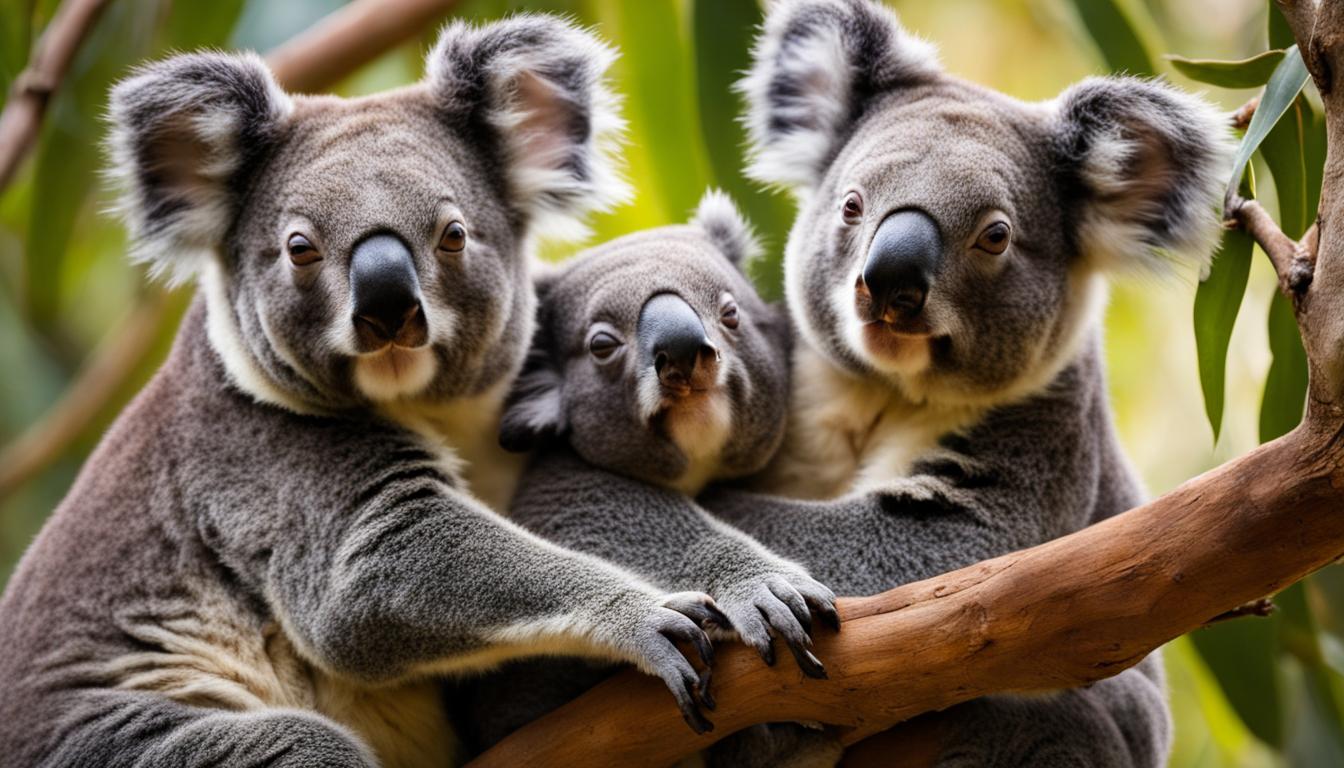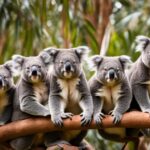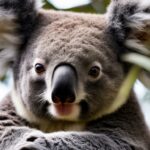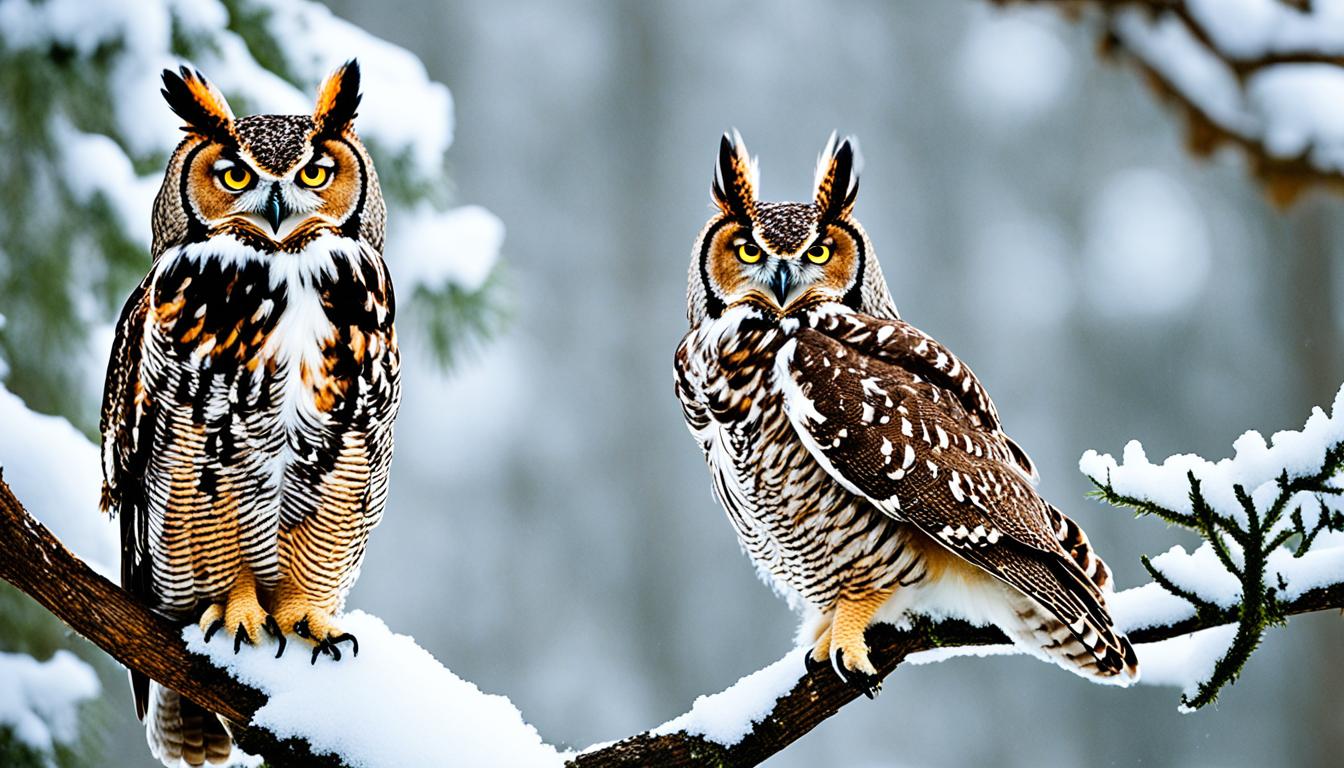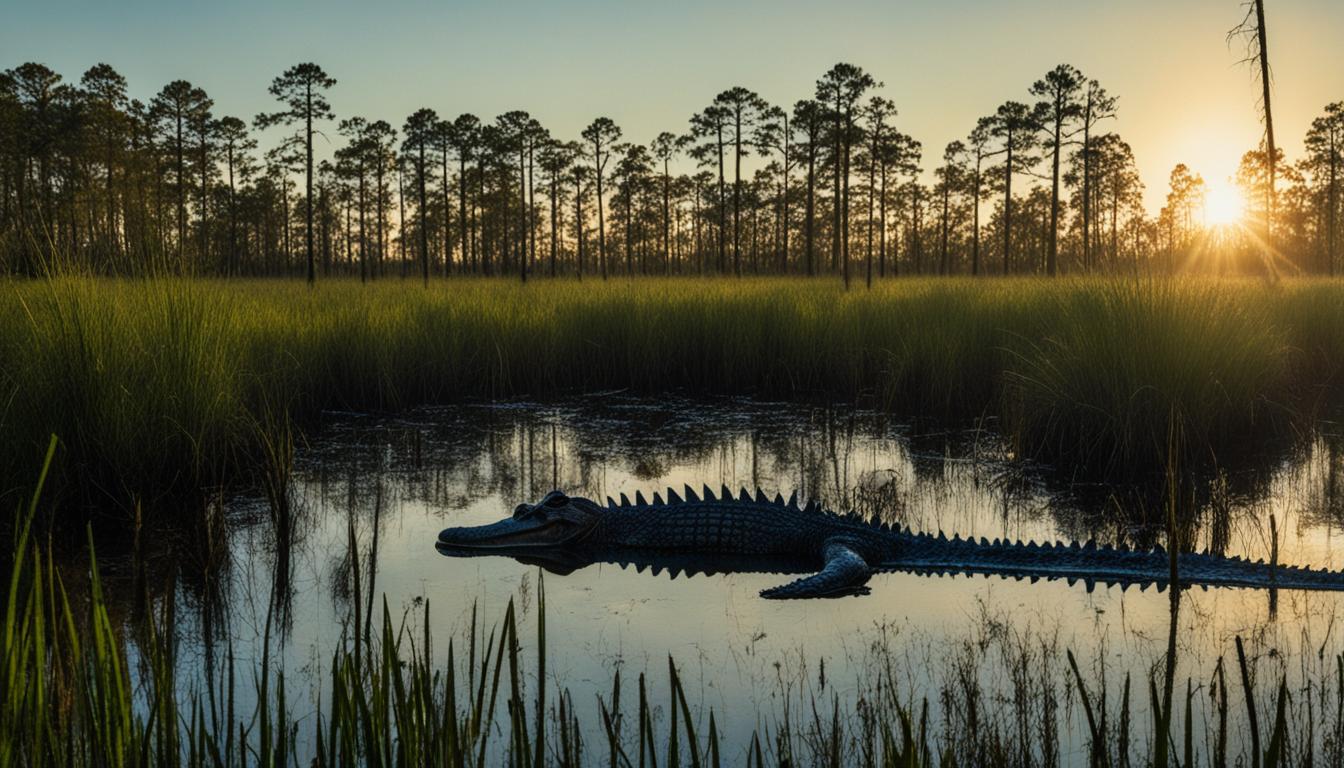When it comes to koalas, their mating habits, breeding behavior, and reproduction are fascinating. These adorable creatures, found in the eucalypt woodlands of Australia, have a unique approach to procreation.
During the mating season, which occurs in the spring and summer, male koalas unleash their mating calls called bellows. These loud calls help them attract the attention of females and find a mate for the year. Female koalas, on the other hand, mate with different males each year.
Mating itself is not a gentle process for koalas. The male climbs onto the female, bites the back of her neck, and briefly copulates with her. It’s a primal and primal instinct-driven act that serves to ensure successful reproduction and the continuation of the koala population.
Female koalas have the power to reject males they are not interested in and successfully reject more males than they accept. It’s their way of selecting the most suitable mate for themselves and their future offspring.
Stay tuned to learn more about the intriguing koala reproductive cycle and the unique courtship and mating rituals of these amazing creatures.
The Koala Reproductive Cycle
Koalas, native to Australia, have a unique and fascinating reproductive cycle. Understanding their mating habits and reproductive rituals can provide valuable insights into the conservation and preservation of these iconic creatures.
The koala mating season typically occurs during the late spring and early summer, specifically around October and November in the southern hemisphere. This is when female koalas experience estrus and mate with males, usually once a year. After mating, the female undergoes a relatively short gestation period of about 35 days before giving birth to a single joey.
The joey then enters the mother’s pouch, attaching itself to a nipple and relying solely on the mother’s milk for nourishment. It spends approximately six months in the safety of the pouch, growing and developing before gradually venturing out. Once out of the pouch, the joey gradually transitions to a diet of semi-digested leaves known as pap and continues to stay close to its mother for several more months before becoming independent.
| Reproductive Cycle | Mating Season | Gestation Period | Joey Development |
|---|---|---|---|
| Female Koalas | Late spring and early summer | About 35 days | In mother’s pouch for six months, gradually becomes independent |
The reproductive cycle of koalas highlights their remarkable adaptation to their environment and the careful timing of their reproductive efforts. By understanding these processes, we can better appreciate and protect these beloved creatures for generations to come.
Koala Courtship and Mating Rituals
Koalas have unique courtship and mating rituals that play a crucial role in their reproductive strategies. During the mating season, male koalas engage in various behaviors to attract females. They mark their territory by rubbing their chests against trees and leaving their scent to communicate their presence to potential mates. Additionally, male koalas emit loud calls called bellows, which serve as a means of advertising their fitness and availability to females. These bellows can be heard from a long distance, allowing females to locate potential mates.
Females, on the other hand, have the power to choose their mates. They travel through the males’ home ranges to assess their suitability. If a male fails to meet the female’s criteria, she will reject his advances by crying out or moving away. This ability to reject males is essential for female koalas to ensure successful reproduction.
“During the mating process, the male koala bites the back of the female’s neck and briefly copulates with her. This behavior helps ensure the continuation of the koala population,” explains Dr. Jane Mitchell, a wildlife biologist specializing in koala behavior.
The courtship and mating rituals of koalas are fascinating to observe, and they highlight the complexity of their reproductive strategies. By employing various behaviors and signals, male and female koalas ensure successful reproduction, contributing to the survival of their species in the wild.
Table: Koala Courtship and Mating Rituals
| Behavior | Explanation |
|---|---|
| Male Marking | Males mark their territory by rubbing their chests against trees, leaving their scent to attract females. |
| Male Bellows | Males emit loud calls known as bellows to advertise their fitness and availability to potential mates. |
| Female Exploration | Females travel through males’ home ranges to assess their suitability as mates. |
| Female Rejection | If a female is not interested in a male, she will cry out or move away to reject his advances. |
| Mating Process | The male bites the back of the female’s neck and briefly copulates with her to ensure successful reproduction. |
Koala Reproduction Patterns
When it comes to koala reproduction, females typically give birth to one joey at a time, although rare cases of twins have been observed. The gestation period for a female koala lasts about 35 days, after which she gives birth to a tiny joey. The joey immediately crawls into its mother’s pouch and attaches to a nipple, where it will remain for the next six months.
During this time, the joey relies solely on its mother’s milk for sustenance. As it grows, the joey gradually spends more time outside of the pouch and starts to consume semi-digested leaves called pap. This transitional period prepares the joey for eventual independence.
Koala Reproduction Strategies
Koalas have developed unique reproductive strategies to ensure the continuation of their species. Females mate with different males each year, allowing for greater genetic diversity among their offspring. This practice also enables females to choose the strongest and healthiest mates.
Both male and female koalas can start mating and reproducing when they are around two years old. This ensures that they have reached sexual maturity and are physically capable of successfully reproducing. By waiting until this age, koalas can maximize their chances of producing healthy offspring.
| Reproduction Patterns | Description |
|---|---|
| Gestation Period | About 35 days |
| Number of Offspring | Typically one joey, rare cases of twins |
| Mating Age | Around two years old |
| Parental Care | The female provides care and nourishment to the joey until it becomes independent |
Overall, koalas’ reproduction patterns and strategies are geared toward ensuring the survival and genetic diversity of their species. By understanding and protecting these unique reproductive behaviors, we can contribute to the conservation efforts aimed at preserving the iconic koala population.
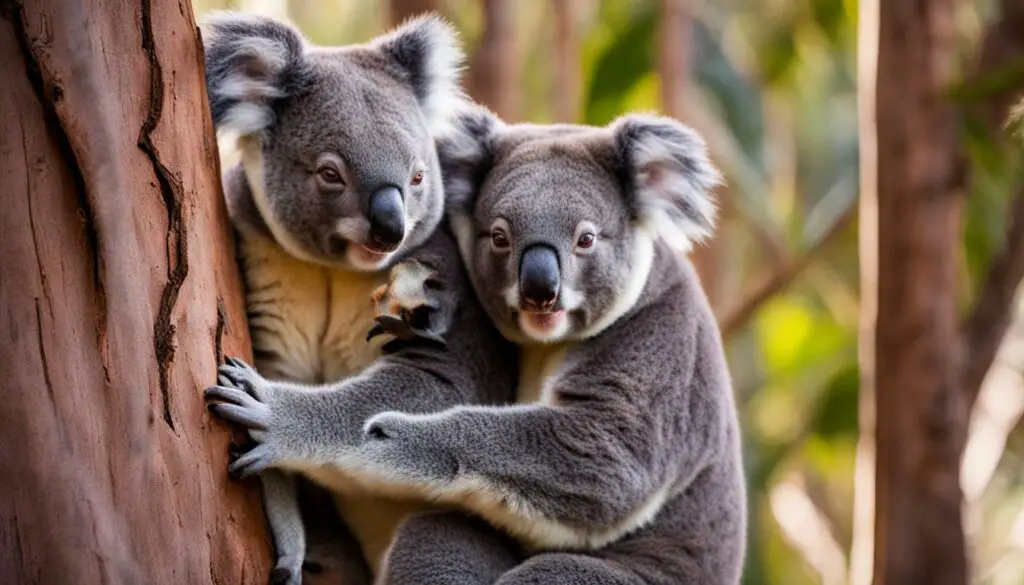
Koala Habitat and Distribution
Koalas are primarily found in the eucalypt woodlands of Australia, inhabiting a range of open forest and woodland communities. They have a strong preference for areas with specific food trees, particularly various species of eucalyptus trees. These trees provide the koalas with their main source of food and shelter. The distribution of koalas covers much of Queensland, New South Wales, Victoria, and a small area in South Australia. However, their habitat has been under threat due to clearing and fragmentation for agriculture and human settlement.
Due to the loss of their natural habitat, koalas have also been forced to adapt to urban areas where their habitat has been partially cleared. This puts them in close proximity to human settlements, leading to increased encounters and potential conflicts. The greatest concentration of koalas is currently found in South East Queensland, where competition for resources with a growing human population further exacerbates the challenges faced by these iconic creatures.
Koala Habitat and Distribution Statistics
| Region | Habitat Area (sq km) | Koala Population |
|---|---|---|
| Queensland | 100,000 | Approximately 330,000 |
| New South Wales | 250,000 | Approximately 20,000 |
| Victoria | 5,000 | Approximately 9,000 |
| South Australia | 500 | Approximately 1,000 |
The table above provides an overview of the habitat areas and estimated koala populations in different regions. It is important to note that these population estimates are subject to change due to various factors such as habitat loss, disease, and climate change. Efforts are being made to protect and restore koala habitats, ensuring the survival and conservation of this unique species in the wild.
“The distribution of koalas covers much of Queensland, New South Wales, Victoria, and a small area in South Australia.”
Koala Description and Behavior
Koalas are fascinating creatures with unique physical characteristics and intriguing behavior. They have a distinctive appearance, with a large round head, furry ears, and a big black nose. Their grey-brown fur is complemented by patches of white on their chest, inner arms, ears, and bottom. This coloration helps them blend in with the branches and leaves of their tree habitat.
One of the most notable features of koalas is their strong arms, powerful legs, and sharp claws adapted for climbing trees. They are arboreal mammals, spending most of their time in trees, where they feel safe from predators and have a steady supply of their preferred food, eucalyptus leaves. Koalas have poor vision, relying instead on their excellent hearing and sense of smell to detect danger and locate other koalas.
When it comes to behavior, koalas are known for their sleep habits. They are mostly nocturnal, meaning they are most active at night. However, they can also be spotted during the day if they are disturbed or searching for a new tree. Koalas are not particularly energetic animals and spend up to 20 hours a day sleeping or resting. Their diet consists almost entirely of eucalyptus leaves, which provide them with the nutrients and moisture they need.
Overall, the physical characteristics and behavior of koalas make them well-suited to their tree-dwelling lifestyle. Their unique adaptations and lifestyle choices are essential for their survival in their natural habitat.
Koala Facts
- Koalas have a specialized digestive system that allows them to break down the toxic compounds in eucalyptus leaves.
- They have a small brain compared to their body size, which is thought to be an adaptation to their low-energy diet.
- Koalas have a strong grip due to their two opposable thumbs on each hand, which helps them climb and hold onto branches.
- Their mating calls, known as bellows, can be heard up to a kilometer away.
- Koalas have unique fingerprints, similar to humans, which have been used in research and identification.
“Koalas are a true testament to the wonders of nature, with their specialized physical attributes and fascinating behaviors. They have successfully adapted to their tree-dwelling lifestyle, relying on their keen senses and unique digestive system to thrive in their eucalyptus-filled habitat.”
While koalas may appear cute and cuddly, it is important to remember that they are wild animals and should be observed from a safe distance. Their conservation is crucial to ensuring their long-term survival, as they face numerous threats, including habitat loss and disease. By understanding and appreciating their physical characteristics and behavior, we can better protect and conserve these iconic Australian animals for generations to come.
| Physical Characteristics | Behavior |
|---|---|
| Distinctive appearance with round head, furry ears, and black nose | Mostly nocturnal, active at night but can be seen during the day if disturbed |
| Grey-brown fur with white patches on chest, inner arms, ears, and bottom | Spend up to 20 hours a day sleeping or resting |
| Strong arms, powerful legs, and sharp claws for climbing trees | Rely on excellent hearing and smell to detect predators and locate other koalas |
| Specialized digestive system for breaking down toxic compounds in eucalyptus leaves | Diet consists almost entirely of eucalyptus leaves |
Conclusion
Koalas have a fascinating life cycle that revolves around their unique mating and reproductive behaviors. Females mate once a year, giving birth to a single joey after a short gestation period. The joey then spends several months in the mother’s pouch, gradually becoming independent as it grows.
However, koalas are currently facing conservation challenges, as their populations have been dwindling. Loss of habitat due to human activities, such as clearing and fragmentation, is a significant threat to their survival. Additionally, diseases like chlamydia have further contributed to the decline in koala numbers.
Efforts are being made to protect the habitat of these iconic Australian animals and ensure their survival in the wild. Conservation organizations are working tirelessly to restore and preserve koala habitats, while also implementing measures to prevent and manage diseases that affect them.
It is crucial that we continue to support these conservation efforts and raise awareness about the importance of preserving koala populations. With collective action, we can help secure a future where koalas thrive and continue to enchant us with their unique life cycle.
What is the Reproduction Cycle of Koalas and How Does Mating Occur in the Wild?
Koala reproduction cycle involves mating, which occurs in the wild through a specific process. During the breeding season, male koalas produce loud mating calls to attract females. After successful mating, the female undergoes a gestation period of around 35 days before giving birth to a single joey. The joey stays in the mother’s pouch for around six months before gradually becoming independent. The whole koala reproduction cycle is essential for maintaining their population in the wild.
FAQ
How do koalas mate and reproduce in the wild?
Koalas mate during the spring and summer seasons. Males make loud mating calls called bellows to attract females. Mating is not gentle, as the male bites the back of the female’s neck and briefly copulates with her. Female koalas mate with a different male each year and give birth to a single joey after a short gestation period. The joey stays in the mother’s pouch for several months before becoming independent.
What is the reproductive cycle of koalas?
Koalas typically breed during the late spring and early summer, around October and November in the southern hemisphere. Females experience estrus during this period and mate as often as once a year. After a gestation period of about 35 days, the female gives birth to a single joey. The joey stays in the mother’s pouch for approximately six months before becoming independent.
What are the courtship and mating rituals of koalas?
Male koalas advertise themselves to females by marking trees with their scents and making loud calls known as bellows. They may also physically fight with other males for access to females. When a female is interested in a male, she will go on an excursion to find him in his home range. If she’s not interested, she’ll cry out and reject him. Mating itself is not gentle, with the male biting the back of the female’s neck and briefly copulating with her.
What are the reproduction patterns of koalas?
Female koalas typically give birth to one joey at a time, although rare cases of twins have been observed. After a gestation period of about 35 days, the female gives birth to a tiny joey, which crawls into her pouch and attaches to a nipple. The joey stays in the pouch for around six months, relying solely on its mother’s milk for sustenance. After leaving the pouch, the joey gradually spends more time outside and becomes independent by around one year of age. Both males and females can start mating and reproducing when they are around two years old.
What is the habitat and distribution of koalas?
Koalas are found in a range of open forest and woodland communities in Australia. They primarily inhabit areas with various species of eucalyptus trees, which serve as their main food source. The distribution of koalas covers much of Queensland, New South Wales, Victoria, and a small area in South Australia. However, their habitat has been threatened by clearing and fragmentation for agriculture and human settlement. They can also be found in urban areas where their habitat has been partially cleared.
What are the physical characteristics and behavior of koalas?
Koalas have a distinctive appearance with a large round head, furry ears, and a big black nose. They have grey-brown fur with white fur on their chest, inner arms, ears, and bottom. Koalas have poor vision and rely on their hearing and smell to detect predators and other koalas. They have strong arms, powerful legs, and sharp claws adapted for climbing trees. Koalas are arboreal mammals and spend most of their time in trees, sleeping for up to 20 hours a day. They are mostly active at night but can be seen moving during the day if disturbed or in need of finding a new tree.

